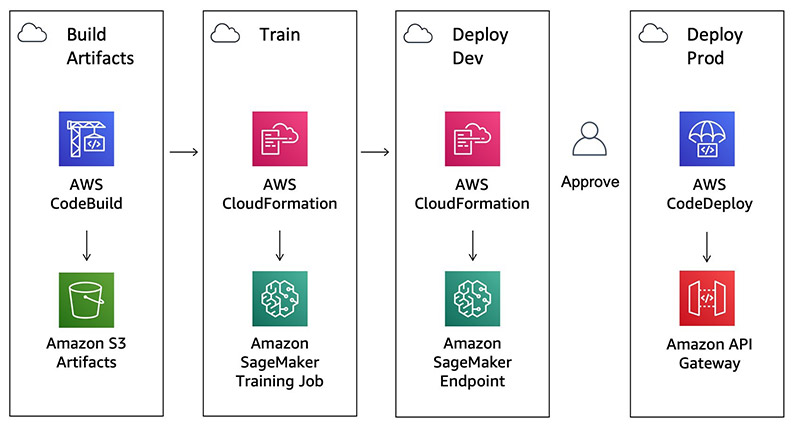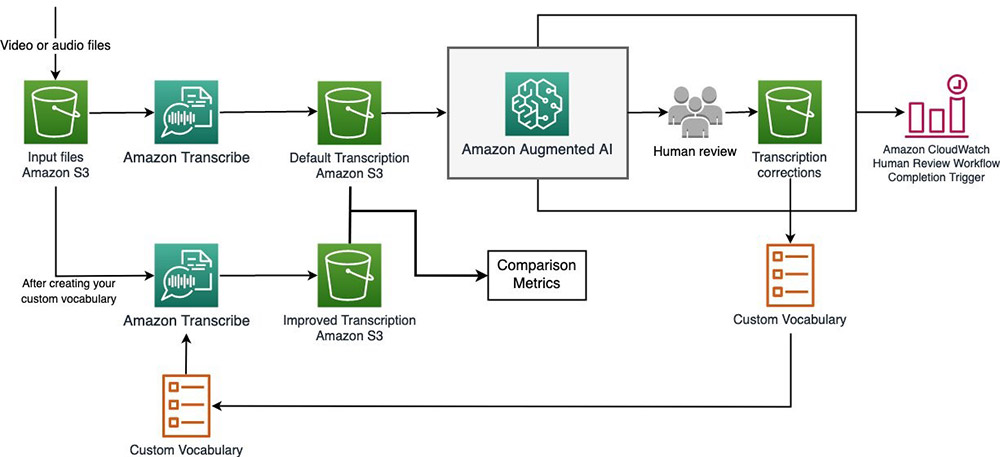AWS Machine Learning Blog
Securing Amazon Comprehend API calls with AWS PrivateLink
Amazon Comprehend now supports Amazon Virtual Private Cloud (Amazon VPC) endpoints via AWS PrivateLink so you can securely initiate API calls to Amazon Comprehend from within your VPC and avoid using the public internet. Amazon Comprehend is a fully managed natural language processing (NLP) service that uses machine learning (ML) to find meaning and insights […]
Machine learning best practices in financial services
We recently published a new whitepaper, Machine Learning Best Practices in Financial Services, that outlines security and model governance considerations for financial institutions building machine learning (ML) workflows. The whitepaper discusses common security and compliance considerations and aims to accompany a hands-on demo and workshop that walks you through an end-to-end example. Although the whitepaper […]
Build more effective conversations on Amazon Lex with confidence scores and increased accuracy
In the rush of our daily lives, we often have conversations that contain ambiguous or incomplete sentences. For example, when talking to a banking associate, a customer might say, “What’s my balance?” This request is ambiguous and it is difficult to disambiguate if the intent of the customer is to check the balance on her […]
Training knowledge graph embeddings at scale with the Deep Graph Library
We’re extremely excited to share the Deep Graph Knowledge Embedding Library (DGL-KE), a knowledge graph (KG) embeddings library built on top of the Deep Graph Library (DGL). DGL is an easy-to-use, high-performance, scalable Python library for deep learning on graphs. You can now create embeddings for large KGs containing billions of nodes and edges two-to-five […]
Building a Pictionary-style game with AWS DeepLens and Amazon Alexa
April 2023 Update: Starting January 31, 2024, you will no longer be able to access AWS DeepLens through the AWS management console, manage DeepLens devices, or access any projects you have created. To learn more, refer to these frequently asked questions about AWS DeepLens end of life. Are you bored of the same old board games? […]
Safely deploying and monitoring Amazon SageMaker endpoints with AWS CodePipeline and AWS CodeDeploy
As machine learning (ML) applications become more popular, customers are looking to streamline the process for developing, deploying, and continuously improving models. To reliably increase the frequency and quality of this cycle, customers are turning to ML operations (MLOps), which is the discipline of bringing continuous delivery principles and practices to the data science team. […]
Deploying your own data processing code in an Amazon SageMaker Autopilot inference pipeline
The machine learning (ML) model-building process requires data scientists to manually prepare data features, select an appropriate algorithm, and optimize its model parameters. It involves a lot of effort and expertise. Amazon SageMaker Autopilot removes the heavy lifting required by this ML process. It inspects your dataset, generates several ML pipelines, and compares their performance […]
Multi-GPU and distributed training using Horovod in Amazon SageMaker Pipe mode
There are many techniques to train deep learning models with a small amount of data. Examples include transfer learning, few-shot learning, or even one-shot learning for an image classification task and fine-tuning for language models based on a pre-trained BERT or GPT2 model. However, you may still have a use case in which you need […]
Building machine learning workflows with Amazon SageMaker Processing jobs and AWS Step Functions
Machine learning (ML) workflows orchestrate and automate sequences of ML tasks, including data collection, training, testing, evaluating an ML model, and deploying the models for inference. AWS Step Functions automates and orchestrates Amazon SageMaker-related tasks in an end-to-end workflow. The AWS Step Functions Data Science Software Development Kit (SDK) is an open-source library that allows […]
Improving speech-to-text transcripts from Amazon Transcribe using custom vocabularies and Amazon Augmented AI
Businesses and organizations are increasingly using video and audio content for a variety of functions, such as advertising, customer service, media post-production, employee training, and education. As the volume of multimedia content generated by these activities proliferates, businesses are demanding high-quality transcripts of video and audio to organize files, enable text queries, and improve accessibility […]







